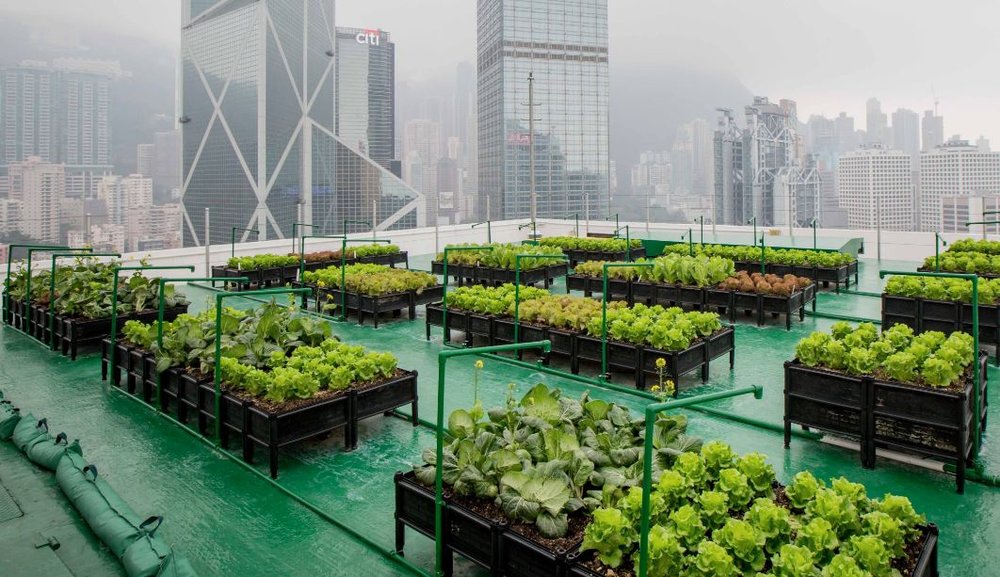City Blooming - The Facts
City Blooming - The Facts
Blog Article
Little Known Questions About City Blooming.
Table of ContentsNot known Facts About City BloomingCity Blooming Fundamentals ExplainedEverything about City BloomingSome Of City BloomingThe Best Strategy To Use For City Blooming
Intrigued in expanding food for sale in the City of Chicago? Believing regarding starting a community yard? Modifications to the Chicago Zoning Statute allow farming usages like neighborhood yards and metropolitan ranches in numerous parts of the city. Below is a listing of frequently asked concerns relating to the regulations and policies that farmers should consider when planning a metropolitan farming job.
The zoning modification does not customize any type of various other codes dealing with composting, structure permits, purchasing or leasing City owned home, business licenses or environmental contamination. There are existing codes that regulate these problems and they remain in complete result and may apply to your project. Neighborhood yards are generally owned or taken care of by public entities, public organizations or community-based organizations and preserved by volunteers.
Urban farms grow food that is planned to be sold, either on a nonprofit or for-profit basis. Due to their commercial purpose, urban farms call for a business permit. Yes. An area garden is permitted to sell surplus produce that was grown on site if the sales are accessory or secondary to the garden's main purpose defined over.
The 3-Minute Rule for City Blooming
The amount of garden compost product can not surpass 25 cubic backyards at any kind of provided time according to the criteria in 7-28-715 of the City's Municipal Code. Because the dirt at most brand-new garden sites needs amending, garden compost, dirt, wood chips, or other products can be gotten to build or improve the growing area.

If a building permit is called for then the hoophouse will certainly be considered an accessory building. You can learn more regarding the structure permit needs by calling the Division of Buildings. The 25,000-square-foot size restriction is planned to stop a single neighborhood yard from controling a given block or diminishing the block's existing residential or business character.
The restriction does not relate to yards located in Public Open Area (POS) districts. Can there be greater than one area garden that is 25,000 square feet on a solitary block? Yes. The size limit applies to individual yards, not to individual blocks. No. Fencing is not called for, nonetheless, gardens that have huge vehicle parking areas may be required to mount secure fencing or various other landscaping features.
City Blooming Fundamentals Explained
B1 & B2 districts require pop over here that all business usage activities be carried out inside your home. Is secure fencing required for urban ranches? Fences may be needed, along with landscape design and testing, for specific auto parking locations and exterior job or storage space areas depending on area and the certain activity taking location.
Yes. Urban ranches require structure authorizations and zoning authorizations prior to building. Various other kinds of city testimonial might be called for relying on details structures, tasks, size, landscaping, licensing, public health and stormwater administration concerns. A number of these demands are identified in the task design or allowing process, however, the applicant might be accountable to individually determine specific licenses or permits that may be required.
The Department of Business Affairs and Consumer Defense can aid identify the certain kind of company permit that's required. Off street car parking is required for a lot of business jobs in Chicago. The required number of car park spaces is based on the number of staff members working on website and not the square footage of the expanding room.
City Blooming Can Be Fun For Everyone

Yes. An urban farm can market compost material created on site, however, the operation should adhere to the laws in 7-28-715 of the Chicago Municipal Code. Yes. Aquaponic systems are allowed inside your home on city ranches in lots of zoning districts. A zoning evaluation and structure authorization is called for in order to install frameworks or systems and an organization certificate is needed as defined over.
Up to five hives or colonies of honey bees might be kept as an accessory usage. However, beekeepers should sign up with the Illinois Division of Agriculture. For more details concerning the proposed zoning modification you might call the Division of Housing and Economic Advancement, Bureau of Planning and Zoning at 312.744.8563.
Farming in cities and metropolitan areas A metropolitan ranch in Chicago. Urban farming describes numerous methods of growing. https://cityblooming.jimdosite.com/, handling, and dispersing food in metropolitan areas. The term also relates to the location tasks of animal husbandry, tank farming, beekeeping, and cultivation in a city context. Urban agriculture is identified from peri-urban agriculture, which occurs in rural locations beside suburbs.
About City Blooming
, that look for to create social networks established on a shared ethos of nature and area holism. These networks can establish by way of official institutional assistance, coming to be integrated into neighborhood community planning as a "shift town" activity for lasting urban advancement.
In either situation, the much more direct accessibility to fresh veggie, fruit, and meat products that might be realised via city farming can boost food safety and security and food safety and security while lowering food miles, leading to reduced greenhouse gas exhausts, therefore adding to climate change reduction. Some of the initial evidence of urban agriculture originates from Mesopotamia.
Report this page